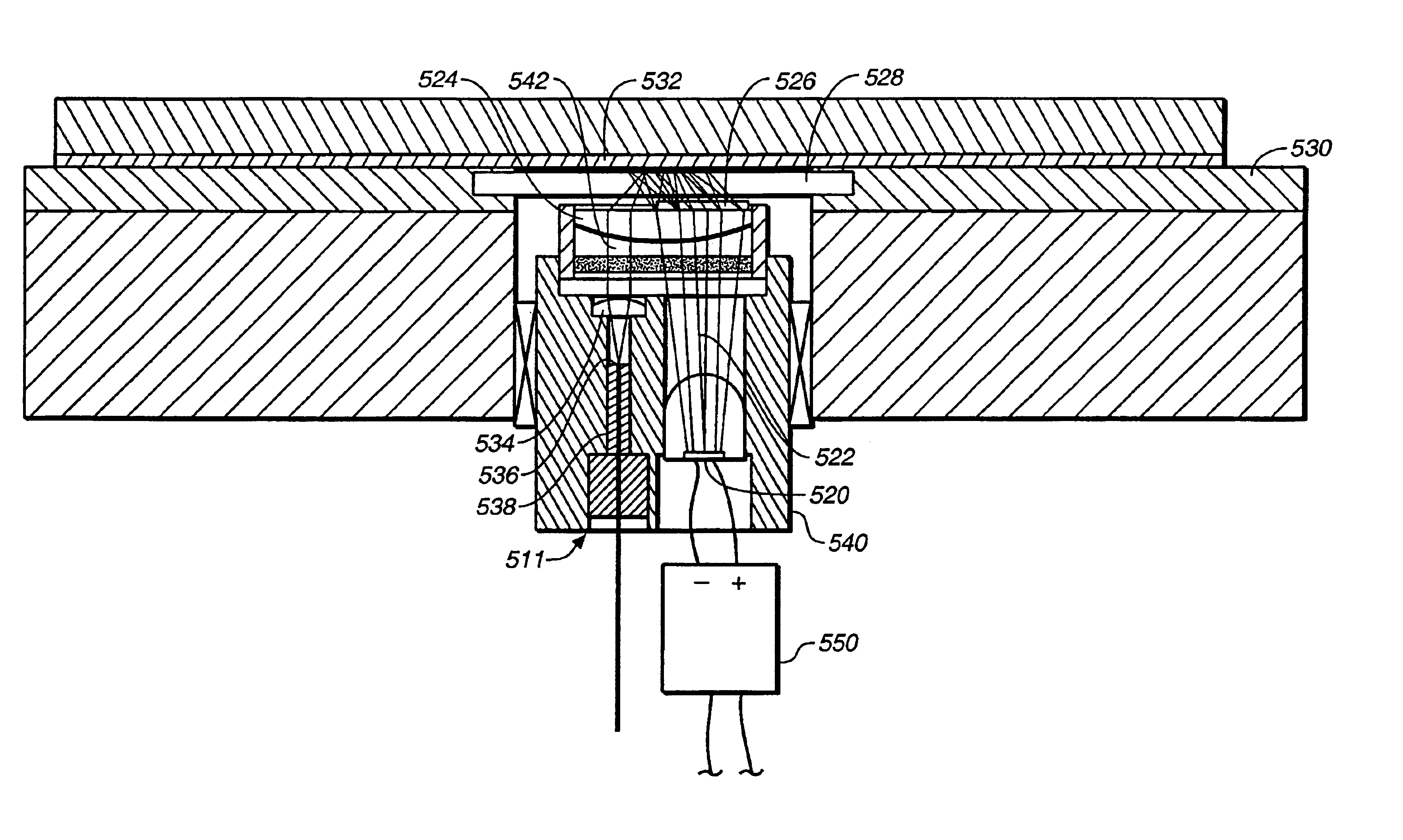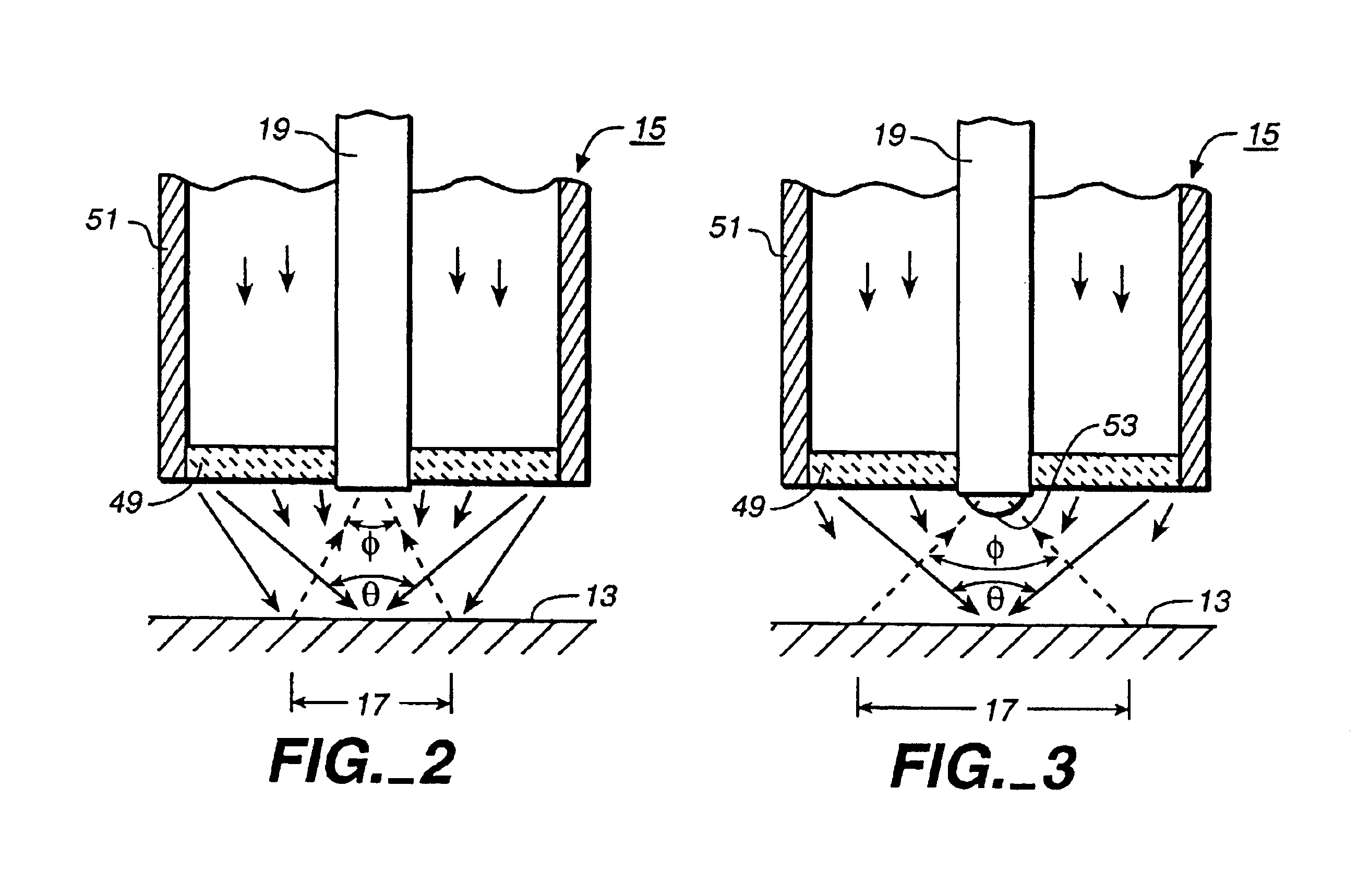Optical techniques for measuring layer thicknesses and other surface characteristics of objects such as semiconductor wafers
a technology of optical techniques and surface characteristics, applied in the direction of manufacturing tools, lapping machines, instruments, etc., can solve the problems of significant amounts of undesired noise in the measurement signal, and achieve the effects of reducing the effects of scattering variations, reducing the source of noise, and increasing the depth of focus of the collection optics
- Summary
- Abstract
- Description
- Claims
- Application Information
AI Technical Summary
Benefits of technology
Problems solved by technology
Method used
Image
Examples
Embodiment Construction
[0045]Referring initially to FIG. 1, a system utilizing the measurement techniques of the present invention is illustrated in general terms. A substrate or other object 11 contains a surface 13 that is being measured. An optical sensor head 15 directs optical radiation from one or more light emitting diodes (LEDs) against a spot 17 of the surface 13. Other sources of optical radiation can be used instead of LEDs but it is preferred that they have a narrow bandwidth, such as a few dozen nanometers in wavelength, or less. Highly coherent sources of optical radiation are unnecessary. A portion of the source radiation that is reflected from the surface is gathered by suitable optics, such as an optical fiber 19. Other optics, such as an optical fiber 21, collects a portion of the source radiation, preferably without any significant amount of radiation reflected from the surface, as background radiation that is used as a reference.
[0046]The sensor head 15 is connected with a module 23 th...
PUM
| Property | Measurement | Unit |
|---|---|---|
| angle | aaaaa | aaaaa |
| angle | aaaaa | aaaaa |
| angle | aaaaa | aaaaa |
Abstract
Description
Claims
Application Information
 Login to View More
Login to View More - R&D
- Intellectual Property
- Life Sciences
- Materials
- Tech Scout
- Unparalleled Data Quality
- Higher Quality Content
- 60% Fewer Hallucinations
Browse by: Latest US Patents, China's latest patents, Technical Efficacy Thesaurus, Application Domain, Technology Topic, Popular Technical Reports.
© 2025 PatSnap. All rights reserved.Legal|Privacy policy|Modern Slavery Act Transparency Statement|Sitemap|About US| Contact US: help@patsnap.com



